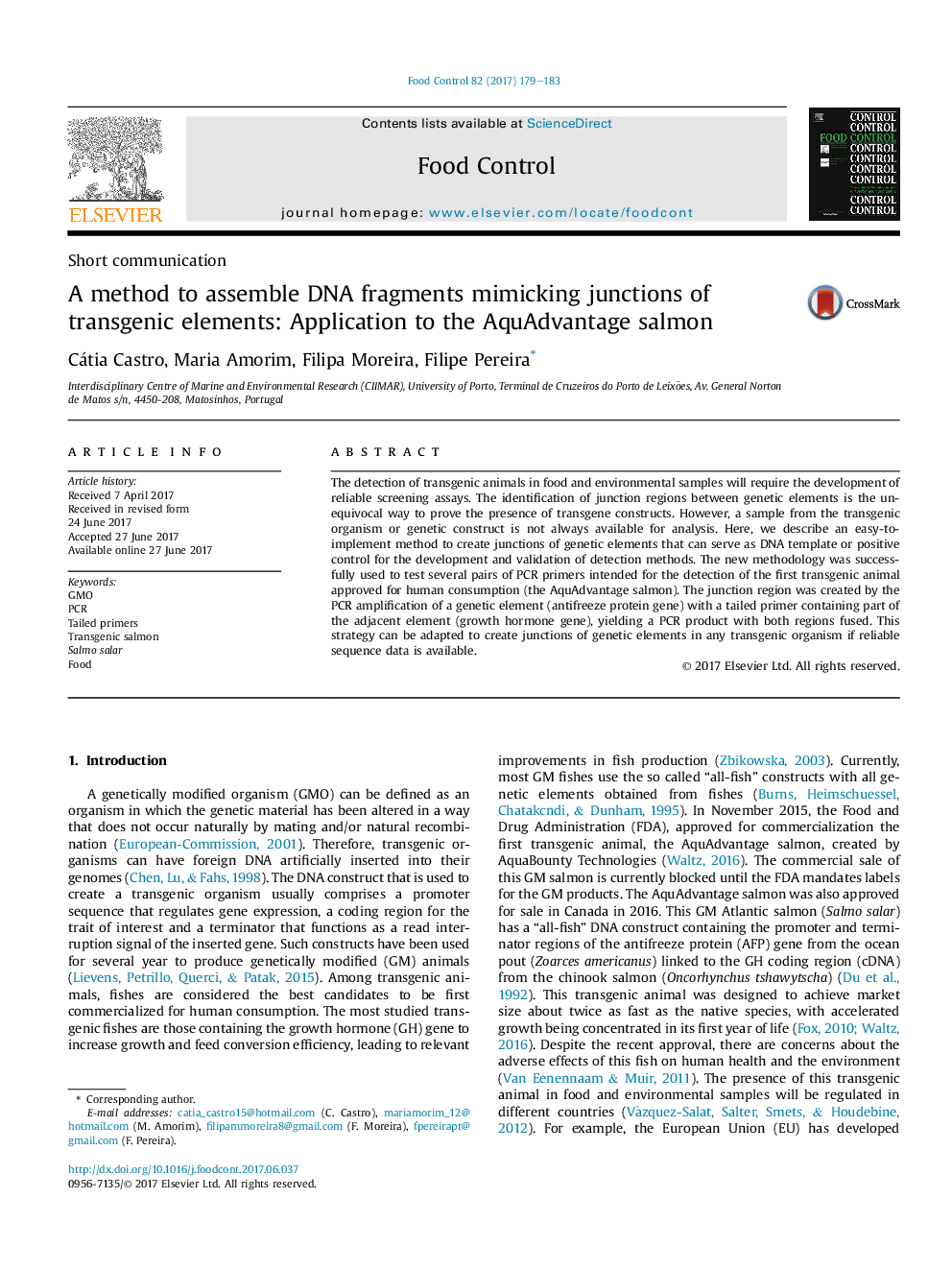| Article ID | Journal | Published Year | Pages | File Type |
|---|---|---|---|---|
| 5767147 | Food Control | 2017 | 5 Pages |
â¢A method to assemble DNA fragments mimicking junctions of transgenic elements.â¢The junction template is created by PCR with a tailed primer.â¢A proposal of PCR primers for the detection of the AquAdvantage salmon.â¢This strategy can be adapted to any transgenic organism with available sequences.
The detection of transgenic animals in food and environmental samples will require the development of reliable screening assays. The identification of junction regions between genetic elements is the unequivocal way to prove the presence of transgene constructs. However, a sample from the transgenic organism or genetic construct is not always available for analysis. Here, we describe an easy-to-implement method to create junctions of genetic elements that can serve as DNA template or positive control for the development and validation of detection methods. The new methodology was successfully used to test several pairs of PCR primers intended for the detection of the first transgenic animal approved for human consumption (the AquAdvantage salmon). The junction region was created by the PCR amplification of a genetic element (antifreeze protein gene) with a tailed primer containing part of the adjacent element (growth hormone gene), yielding a PCR product with both regions fused. This strategy can be adapted to create junctions of genetic elements in any transgenic organism if reliable sequence data is available.
